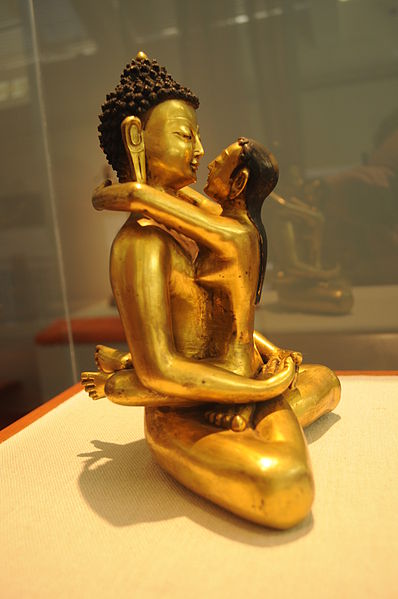In Dzogchen, rigpa is knowledge of the ground. The opposite of rigpa is ma rigpa. A practitioner who has attained the state of rigpa and is able to rest there continuously is called a Rigdzin or Rigma, which may be used as a title either pre- or post-nominally.
Rigpa is often explained through the metaphor of a crystal or a crystal ball
A depiction of the heart centre from a Tibetan Medicine text
Melong Dorje, wearing a melong (mirror), which is a symbol of kadag
A widespread simile for ignorance is the obscuration of the sun by clouds
Dzogchen, also known as atiyoga, is a tradition of teachings in Indo-Tibetan Buddhism and Bon aimed at discovering and continuing in the ultimate ground of existence. The goal of Dzogchen is knowledge of this basis, this knowledge is called rigpa. There are spiritual practices taught in various Dzogchen systems for awakening rigpa.
A widespread simile for ignorance is the obscuration of the sun by clouds
A gankyil, a Tibetan symbol which can symbolize various triple part ideas, such as the ground, path and fruit
An image of the Primordial Buddha Samantabhadra with his consort Samantabhadri. These images are said to symbolize the union of space (emptiness, the female aspect) and clarity - awareness (male).
The metaphors of sky and spaciousness are often used to describe the nature of mind in Dzogchen.







